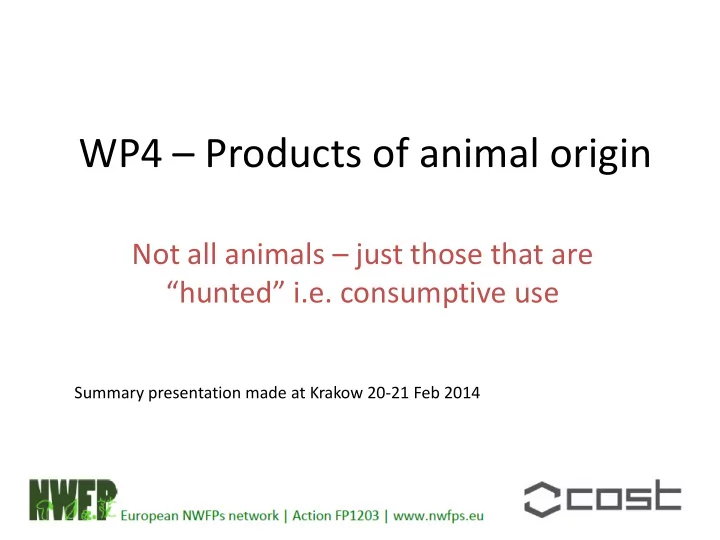

WP4 – Products of animal origin Not all animals – just those that are “hunted” i.e. consumptive use Summary presentation made at Krakow 20-21 Feb 2014
Key features • Animals are mobile • Range greater than individual forest holdings • Need to be understood and managed at landscape scale • Forest owners do not generally have the right to hunt • Generally there is little return of income to forest owners from owners of hunting rights
Management systems • Voluntary co-operation between multiple owners • State control (wildlife or conservation dept) • Forest owner control mostly only in larger holdings
Co-production – wild animals • Wild animals and trees are antagonistic • Management seeks a compromise between production of each • Models commonly used to achieve this (MSY, PVA etc.) • Needs to be socially acceptable • Number and variety of stakeholders influence/constrain decision making
Intersection with TFs • TF1 – ID not a problem: Ecology at landscape scale • TF2 – Many models available • TF3 – Co-production is the norm • TF4 – Good figures for game production; less on multiplier
Co-production – semi-feral animals • Domestic animals (usually hardier breeds) used as management tools in forestry e.g. Highland cattle in Netherlands, Pigs in UK • Often marketed with ‘woodland’ and/or ‘wild’ credentials
Co-production – domesticated animals • Forest (or forest land) used to rear domestic animals e.g. goats, chickens, pheasants etc. • Some hunted • Some marketed with ‘woodland’ credentials • Some illegal • Some woodland aspect is not recognised
What to do? • Explore the “conflicts” between animals and trees and the ways they are addressed (or not) • Bees – agreements rather than conflicts • Explore stakeholder interest in resolution of co-production targets
Recommend
More recommend